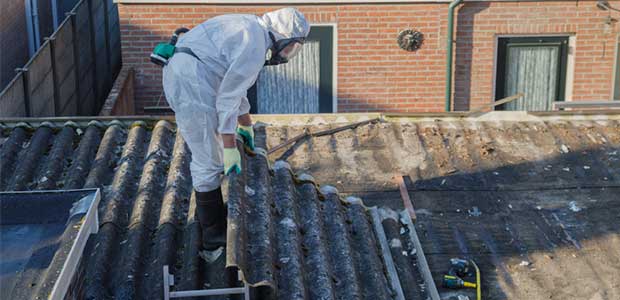
Asbestos Removal During the Coronavirus Pandemic
The treatment of asbestos has become that much more precarious given the outbreak of COVID-19. Here are some tips for asbestos removal and caution against coronavirus with limited PPE.
The coronavirus pandemic has changed the world as we know it. Many industries have closed their doors to shelter-in-place, while many have remained open and deemed essential. Asbestos abatement professionals have been affected by the shutdowns around the country, too. In some ways they have been able to use this as an opportunity; however, shortages of PPE have certainly created challenges.
Asbestos was used in everything from insulation and masonry to ceramic tiles; therefore, the chances of finding asbestos containing products in your home, if built before the 1980s, are high. Exposure to the material has been determined to cause numerous health problems like lung cancer, asbestosis and mesothelioma. These findings prompted the Environmental Protection Agency (EPA) to ban the new use and partially ban the manufacture, import, processing and distribution of asbestos and asbestos containing products in 1989 throughout the United States. Unfortunately, asbestos exposure can still be a serious risk for those living and working in structures built before the 1980s.
If asbestos or asbestos containing products are found in a building, an abatement professional should be consulted promptly to determine the proper course of action. If the asbestos containing product is not damaged, it may be best to leave the material undisturbed. However, if it is damaged and asbestos is able to break off and become airborne, immediate action should be taken. Abatement professionals will safely test the material to confirm it is asbestos and determine if the area is safe for you to inhabit while they help you find the best solution. In some cases, the material can be encapsulated and left in place. In more severe instances, the material must be removed.
Asbestos abatement is an involved process that requires specialized equipment. It is crucial to create a sealed chamber where the removal takes place, utilize negative pressure in the containment area and use proper personal protective equipment (PPE).
During this unprecedented time, PPE has become a scarce resource. If you work in asbestos removal and your employer does not have the proper PPE due to shortages, do not remove asbestos anyways. The consequences to your health are not worth the risk. Asbestos is the only known cause of mesothelioma cancer. Mesothelioma takes ten or more years to develop, and it will likely be too late when symptoms arise. Regardless of the risk that the new coronavirus has placed on our society, the health problems that could result from asbestos exposure must be considered as well.
If abatement professionals are not available due to shortages of PPE, and you have found asbestos in your home while sheltering in place, it is highly recommended that you leave the material alone until a professional can assess the situation. Although there are no federal regulations in regards to removal by homeowners, if you do not use the proper PPE and environmental controls, you could be putting yourself and family members at risk.
Asbestos abatement professionals may also be utilizing this time to remove asbestos in buildings like schools. With many schools closed around the country, this is a good opportunity to remove asbestos in these buildings and protect young lives.
Meeting Today’s Needs
Asbestos abatement companies have the proper PPE to protect themselves against tiny asbestos fibers. Proper PPE includes respirators, tyvek suits and rubber gloves. Abatement company workers are also trained in the proper use of their PPE and know well how to protect themselves against environmental hazards. Since some asbestos removal projects may not be considered essential at this time, some abatement professionals have changed course. Utilizing their training and PPE, companies like JM Environmental have turned to coronavirus and COVID-19 decontamination. Not only will this keep abatement companies from furloughing workers during this time, but it is also a much-needed service to our communities.
Although some projects may be on hold due to the coronavirus pandemic, it has also created an opportunity for asbestos abatement professionals. Whether that be asbestos removal in places like closed schools and universities or the decontamination of public places, abatement professionals are working hard to keep their workforces going and our communities safe. But proper use of PPE is a crucial first step in protecting your workforce from asbestos.